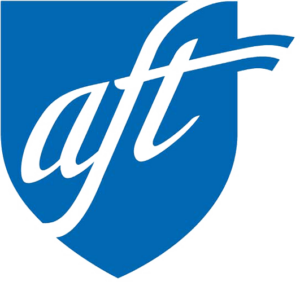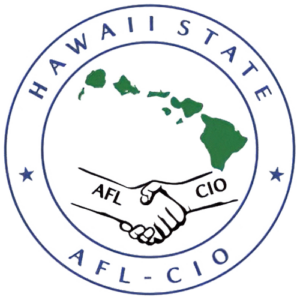Permitted Interaction Group (PIG) or Wild Pig
On Friday, September 10, 2021, the University of Hawai‘i Board of Regents posted their agenda and meeting materials for the September 16, 2021 meeting. Included on the agenda was the report of the Tenure PIG. Based on the February 18, 2021 BOR meeting, the Tenure PIGʻs purpose and scope was to review and investigate the issue of tenure in areas including the history and purpose of tenure at IHEs, particularly regarding the University of Hawai‘i (UH); the evolution of, and current views and developments on, tenure at institutions outside of UH; and the current process, criteria, and decision making on tenure at UH. We question Tenure PIG Chair Ben Kudo whether the report submitted by the Tenure PIG meets the purpose and scope of its original intention. Nevertheless, the following is UHPAʻs critique of the proposed changes to UH Regents Policy RP 9.201.
Symbolic or Sinister?
The Tenure PIGʻs findings and recommended changes to RP 9.201 Personnel Status is to align tenure with the mission and priorities of the University by ensuring that tenure is awarded to positions that will fulfill enrollment requirements and strategic growth priorities. Based on this criteria the Tenure PIG recommended amending Section III. Policy, Paragraph B. Faculty Promotion and Tenure by adding the following criteria on awarding tenure:
2. Before recruitment for tenure-track position occurs, and before award of tenure, the administration shall ensure that: (1) the position fulfills current enrollment requirements and strategic growth priorities for the university and the State: (2) there are no qualified faculty in other units that are available and that could meet the needs of the hiring unit; (3) the balance of tenure-track and other faculty is appropriate given enrollment, mission, and accreditation standards; and (4) the unit is successful and relevant in contributing to the institutional mission and goals.
3. The administration shall ensure that tenure criteria are clear and that they prioritize the necessity for faculty to be adaptable in meeting the changing needs of students and the university, including changes in the delivery of higher education that may occur over time.
Based on initial review, some of the amendments appear to be a silent message to the UH administration demanding a reduction of tenure leading positions at the UH. For the past several decades, the UH administration has been aimlessly reducing the amount of tenure leading positions under the guise of budgetary shortfalls and cuts due to the Stateʻs fiscal constraints. Records reflect that tenure positions at UH are down over 25% from their peak. Ironically, Executive/Managerial at UH has grown substantially over the same period of time.
Thus, itʻs interesting for the Tenure PIG to note in its Resolution that “WHEREAS, the Task Group also acknowledges the fact that in recent years, the University has been steadily reducing the number of tenured faculty, and that tenure is still critical to attract, retain, and support University faculty;” On one hand, the Tenure PIG acknowledges the importance and value of providing faculty with tenure, but on the other hand it recommends placing additional restrictions with vague and ambiguous criteria in order to grant tenure. It reads illogical since they are not synonymous and harmonious with each other. Reading between the lines interprets such changes as a directive to reduce tenure faculty. We have many questions and concerns over using this measurement to determine the tenuring needs of the university
Which Tail is Wagging the Dog?
One of the criteria for awarding tenure is to base the position on whether it fulfills the strategic growth priorities for the university and the State. Without any further details and explanation on what are the defined and approved strategic growth priorities, this statement is read solely as downsizing the number of tenured faculty to adapt to restraints and resources in a time of financial crisis which has been occurring over the past several decades. We question: Which priorities have precedent? The universityʻs or the State? Who determines these strategic growth priorities for UH? What happened to UHʻs autonomy and what priorities does UH have autonomy over? What are the current priorities for the university and the State? Do these priorities work collaborative together or do they conflict? How often will these priorities change and are they defined by short and long term goals? Bottom line. We have many questions and concerns over using this measurement to determine the tenuring needs of the university.
Authoritarian Policy?
The second caveat is that before recruitment for tenure-track positions occurs and before the awarding of tenure, the administration shall ensure that there are no qualified faculty in other units that are available and that could meet the needs of the hiring unit. Based on the vagueness of the language and the ambiguity that shines, is the Tenure PIG recommending that employees submit and be compelled to involuntary reassignments, transfers, demotions, relocations, etc. between units, departments, colleges, and campuses? While Faculty support voluntary recruitment and promotion from within, the unclear purpose, intent, and application of this language is deeply concerning. If there isn’t a clear understanding and recognition that such a policy would be subject to mandatory bargaining, that would be astonishing and unbelievable as well. The skinny down 2 ½ page Report of the Permitted Interaction Group on Tenure that proposed the change doesnʻt provide any substance and/or clarification on its intent, purpose, and application. We have many questions and concerns over using this measurement to determine the tenuring needs of the university.
Recalibrating the Scale?
The third caveat is that before recruitment for tenure-track positions occurs and before the awarding of tenure, the administration shall ensure the balance of tenure-track and other faculty is appropriate given enrollment, mission, and accreditation standards. While one can assume that consideration over enrollment, mission, and accreditation standards has and is already being done, the question here is what is meant and defined by the new stipulation of “balance”? There is no clarification, definition, or meaning behind what balance of tenure-track and other faculty mean. Does it mean that tenure positions shall be equally distributed among the different faculty classifications? Or does “other faculty” mean non-tenure track faculty and a directive to reduce the amount of tenured faculty to equal non-tenure track faculty? If so, would that practice meet the enrollment, mission, and accreditation standards of the UH? Moreover, the importance and significance of accreditation is rightly acknowledged here because what impact, if any, positive or negative, will this have on UHʻs accreditations? Interestingly, the Tenure PIG did acknowledge in their Resolution that tenure is still critical to attract, retain, and support University faculty. We have many questions and concerns over using this measurement to determine the tenuring needs of the university.
Sleight of hand?
The fourth caveat is that before recruitment for tenure-track positions occurs and before the awarding of tenure, the administration shall ensure that the unit is successful and relevant in contributing to the institutional mission and goals. On face value, it sounds reasonable and practical since it has and is still occurring. Thus, the question becomes is there more to this mandate that meets the eye? Again, the skinny down 2 ½ page Report of the Permitted Interaction Group on Tenure that proposed the change doesnʻt provide any substance and/or clarification on its intent, purpose, and application. We have many questions and concerns over using this measurement to determine the tenuring needs of the university.
Unconscious or Insulting?
The other significant amendment is that the administration shall ensure that tenure criteria are clear and that they prioritize the necessity for faculty to be adaptable in meeting the changing needs of students and the university, including changes in the delivery of higher education that may occur over time.
What facts and evidence was revealed during the Tenure PIGʻs investigation that one could make the determination that faculty as they currently exist (hired and developed under current criteria) are not “adaptable” especially “including changes in the delivery of higher education that may occur over time.” Do we not realize that we are still dealing with the COVID-19 pandemic?
Have we all forgotten about how the UH administration ordered the immediate pivoting from in-person to on-line instruction that blindsided faculty given such short notice of the mandate, and how the majority of faculty only had one-week (i.e. Spring Break) to prepare, to implement a 180 degree change in pedagogy? A practice that still remains largely in effect today as our communities and our State deals with the impact of COVID-19 variants.
If the situation that faculty are currently facing is not considered “adaptable” or “changing the delivery of higher education that may occur over time,” then what is being expected and meant by this new requirement from the Tenure PIG? What is meant by being “adaptable?” By whom will the changing needs of students and the university be declared in the future? We have many questions and concerns over using this measurement to determine the tenuring needs of the university.
Discord & Dysfunctional
Clearly, the proposed amendments overall do not really provide a clear and understandable solution to align tenure with the mission and priorities of the University to ensure tenure is awarded to positions that will fulfill enrollment requirements and strategic growth priorities as its stated objectives. What is even more concerning is that many of the recommended changes, directives, processes, and outcomes regarding tenure are already established and outlined in existing BOR policy, namely RP 9.206 Faculty and Staff Renewal and Vitality Plans. This BOR policy has been in effect and in existence for over the past 40 years in which all UH Administrators are required to follow and uphold. Hence, the awarding of tenure has always been aligned with the mission and priorities of the University, including consideration for enrollment requirements and strategic growth priorities.
It’s interesting that former BOR Chair Kudo who was the Chair of the Tenure PIG and who has served as Regent since 2012, did not identify nor suggest any review, analysis, impact, changes, amendments to RP 9.206 or even its abolishment in this review. This glaring omission of due diligence and neglect is compounded by the vagueness and cloudiness of the skinny 2 ½ page Report of the Permitted Interaction Group on Tenure which was to explain its findings and recommendations. As a lawyer by profession, one would expect and demand more of former Chair Ben Kudo who has been a regent for almost a decade.
Message in a Bottle?
We question the entire findings and recommendations of the Tenure PIG. We believe that there is insufficient information and clarification to provide any meaningful insight, knowledge, and understanding of what are the intentions and purpose for these changes to RPs 9.201, 9.202, and 9.213. On its face it may seem benign to the layperson, but to faculty these changes are not only concerning – it’s threatening, belittling, and disrespectful all wrapped up in one. The question we have here is who is the primary receiver of this message – the faculty or the UH administration. If it’s the former, then why in this fashion and why disrupt the faculty by involving faculty in this matter. However, if it’s the prior, you have definitely got facultyʻs attention and interest. Be advised that faculty will be at the October 21, 2021 meeting ready and prepared to address their concerns.



